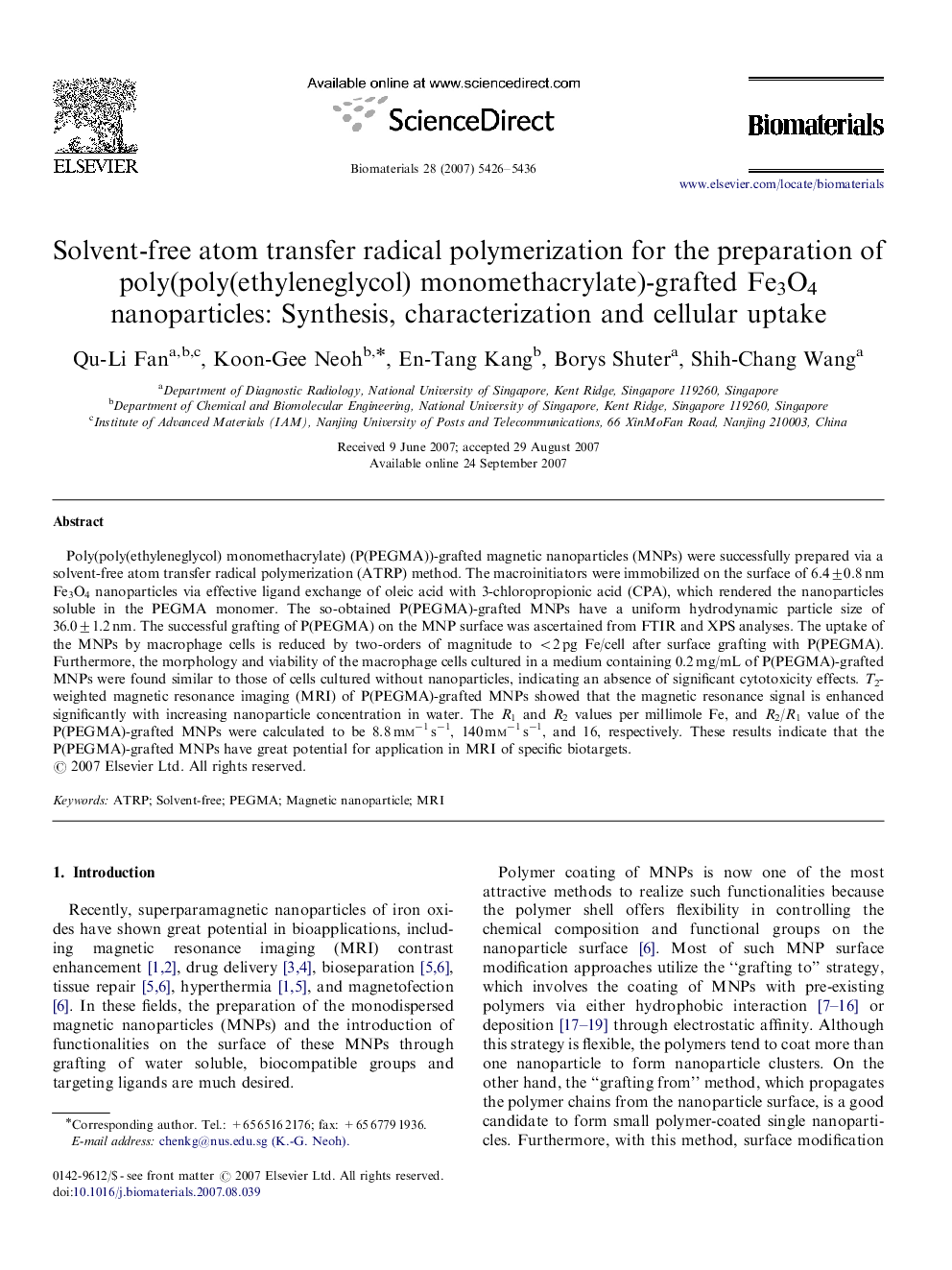| Article ID | Journal | Published Year | Pages | File Type |
|---|---|---|---|---|
| 10348 | Biomaterials | 2007 | 11 Pages |
Poly(poly(ethyleneglycol) monomethacrylate) (P(PEGMA))-grafted magnetic nanoparticles (MNPs) were successfully prepared via a solvent-free atom transfer radical polymerization (ATRP) method. The macroinitiators were immobilized on the surface of 6.4±0.8 nm Fe3O4 nanoparticles via effective ligand exchange of oleic acid with 3-chloropropionic acid (CPA), which rendered the nanoparticles soluble in the PEGMA monomer. The so-obtained P(PEGMA)-grafted MNPs have a uniform hydrodynamic particle size of 36.0±1.2 nm. The successful grafting of P(PEGMA) on the MNP surface was ascertained from FTIR and XPS analyses. The uptake of the MNPs by macrophage cells is reduced by two-orders of magnitude to <2 pg Fe/cell after surface grafting with P(PEGMA). Furthermore, the morphology and viability of the macrophage cells cultured in a medium containing 0.2 mg/mL of P(PEGMA)-grafted MNPs were found similar to those of cells cultured without nanoparticles, indicating an absence of significant cytotoxicity effects. T2-weighted magnetic resonance imaging (MRI) of P(PEGMA)-grafted MNPs showed that the magnetic resonance signal is enhanced significantly with increasing nanoparticle concentration in water. The R1 and R2 values per millimole Fe, and R2/R1 value of the P(PEGMA)-grafted MNPs were calculated to be 8.8 mm−1 s−1, 140 mm−1 s−1, and 16, respectively. These results indicate that the P(PEGMA)-grafted MNPs have great potential for application in MRI of specific biotargets.
